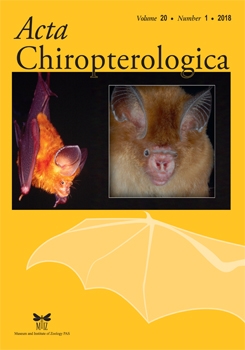Worldwide species density of bats is highest in forests ecosystems. European primeval forests are now reduced to a few small and isolated patches because almost all forests are subject to management. Therefore, knowledge about bats in ancient and near-natural forests in Europe is scarce. In the well-preserved forest stands of the Belovezhskaya Pushcha National Park in Belarus we studied the bat community (1), the presence of maternity colonies and their preference in tree roost selection (2) and parameters of roosts used by forest dwelling bats (3). By mist-netting surveys, we identified 13 bat species and acoustic data suggested the presence of another three species. We detected 15 maternity colonies of seven bat species by radio-tracking reproductive females and 40 tree roosts within the forest. Roosts of Barbastella barbastellus, Pipistrellus pygmaeus and Plecotus auritus were almost exclusively behind the loose tree bark of decaying trees, or within narrow crevices. Myotis nattereri and Nyctalus leisleri showed a preference towards hollows (e.g., woodpecker-made cavities) within oak trees (Quercus robur). Our study shows that all tree-dwelling bat species are highly dependent on natural processes within forests that allow the formation of roost sites. Therefore, we strongly support that the natural aging process of trees, as well as the consequences of natural disturbance (e.g. through weather), should be permitted. This should extend beyond the protected zones of National Parks. In contrast, sanitary cuttings decrease the habitat's suitability for forest-dwelling bats. Finally, our results indicate that the forest complex of Belovezhskaya Pushcha and Białowieża is one of the most important bat areas in Europe.
How to translate text using browser tools
1 June 2018
Bat Community and Roost Site Selection of Tree-Dwelling Bats in a Well-Preserved European Lowland Forest
Markus Dietz,
Michael Brombacher,
Maude Erasmy,
Viktar Fenchuk,
Olaf Simon
ACCESS THE FULL ARTICLE

Acta Chiropterologica
Vol. 20 • No. 1
June 2018
Vol. 20 • No. 1
June 2018
Belovezhskaya Pushcha
conservation
dead wood
primeval forests
radio tracking
tree-dwelling bats




